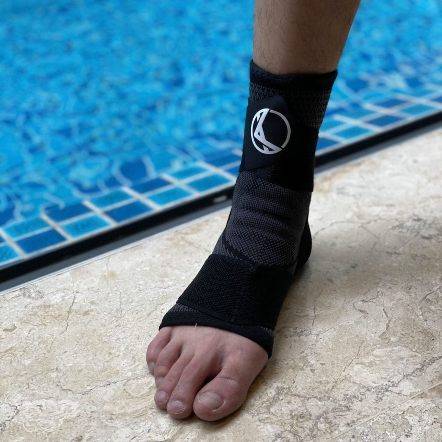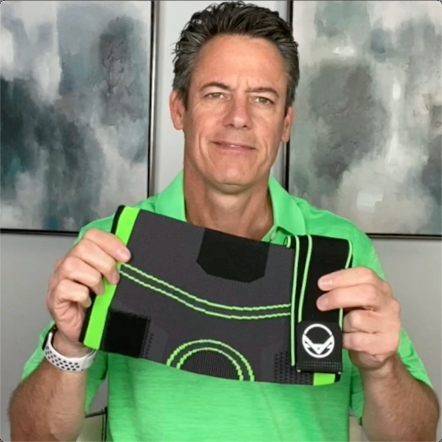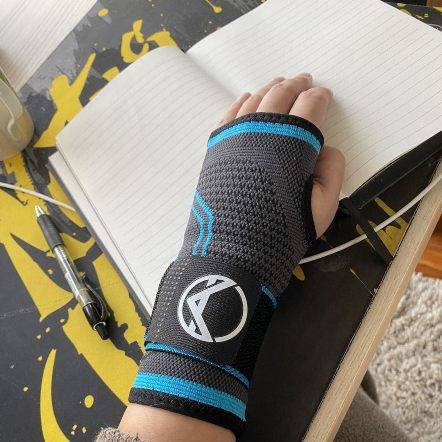
Side Effects Of Wearing Compression Socks
JUL 26,2023 | 3 Mins Read
TABLE OF CONTENTS
If you've ever heard about compression socks and stockings but were not quite sure about their benefits and potential pitfalls, you've come to the right place. In this article, we explore how compression socks work, the pros and cons of using them, and answer some frequently asked questions.

The mechanism by how compression socks work is rooted in the concept of compression therapy. When individuals have a sedentary lifestyle or remain immobile for long periods, the circulatory system, especially in the lower limbs, may not function optimally. This can lead to effects like swelling, tired legs, or even serious medical conditions like blood clots.
Graduated compression socks are specifically designed to address these issues. They apply the maximum, continuous squeeze at the ankles, compressing the superficial leg veins and improving blood circulation. This gentle pressure is instrumental in moving the blood effectively and ensuring that there's no blood pooling in the feet and legs. The socks' fabric is usually tighter at the ankle and gradually decreasing in tightness as they move u
While compression garments, like compression socks, are generally safe and beneficial for most patients, they can potentially lead to side effects if not fitted properly. However, there are several myths that may paint an inaccurate picture of these useful aids. Let's debunk seven common myths about wearing compression socks or stockings:
Fact: The truth is, compression socks are designed to improve your circulation, not cut it off. They apply pressure to your legs and feet to help blood flow back to your heart. However, it's essential to ensure they fit properly to avoid excessive tightness.
Fact: Although largely safe, not everyone should wear compression socks. Those with certain conditions like peripheral neuropathy, skin infections, or pulmonary edema may be advised against using them. Always consult with a healthcare professional before starting to wear compression socks.
Fact: While it's true that compression socks work by applying pressure, too much of it can be harmful. Socks that are too tight can restrict circulation instead of promoting it. It's important to get the right size for your legs and feet. Too tight compression socks can cause tingling and numbness, as well as skin irritation.
Fact: While some people might experience discomfort initially, most adjust quickly. If they're causing significant discomfort or pain, they might not be the right size or compression level. Remember, comfort is key when choosing the right pair for you. Many modern compression socks are designed for comfort and aesthetics. They come in various colors, patterns, and materials to suit individual styles and preferences.
Fact: While it's true you can buy compression socks without a prescription, it's advisable to consult a healthcare provider if you're considering them for a medical condition. They can guide you to the right type and compression level suitable for your needs.
Fact: While it's true you can buy compression socks without a prescription, it's advisable to consult a healthcare provider if you're considering them for a medical condition. They can guide you to the right type and compression level suitable for your needs.
Expert tip:
Gradually Increase Wearing Time: If you're new to compression socks, start by wearing them for a few hours each day and gradually increase the duration. This can help your legs adjust to the compression.
Fact: Compression socks come in various styles, sizes, and compression levels. Some are knee-high, others thigh-high, and some cover the full leg. The level of compression, measured in millimeters of mercury (mmHg), also varies to cater to different needs.

While compression socks come with numerous benefits, they are not devoid of side effects.
A survey-based analysis of 110 questionnaires were conducted with a return rate of 55%. Among these, 29.1% found the therapy comfortable. Approximately 37% had an improvement in their leg symptoms. Most patients (105 out of 110) wore their compression devices for more than six hours a day.
The main side effects reported were dryness of the skin (58.5%), itching (32.7%), slipping (29.1%), and constriction of the compression device (24.5%).
Compression socks can cause skin dryness because they prevent natural moisture loss. However, this issue can be mitigated. Interestingly, the study mentioned above revealed that these side effects can be mitigated by treating the fabric of the socks with a moisturizing finish. To prevent this, apply a good lotion and make sure our legs are dry before you put on your compression socks.
The pressure and friction from the socks on the skin can lead to itching. To prevent this, ensure the
While compression garments, like compression socks, are generally safe and beneficial for most patients, they can potentially lead to side effects if not fitted properly fit properly and that you're not allergic to the material used in them. We also suggest using hypoallergenic laundry detergent when washing your compression socks.
Improper fit can cause the socks to slip down the leg, leading to discomfort and reducing their effectiveness. To prevent this, learn how to measure leg for compression socks properly. This will ensure a snug fit.
Some people may find that the compression socks are too tight, leading to discomfort and possible circulation issues. This happens when you've picked out the wrong size for you. This is why we've curated the perfect guide on finding out how tight your compression socks should be.
Despite these potential drawbacks, many individuals find the compression sock benefits far outweigh the negative aspects. From medical applications to sports and fitness, these therapeutic socks have proven quite useful.
Compression socks not only aid in better blood circulation but also offer support to the muscles and tissues in the lower limbs. Athletes often wear compression socks during and after intense physical activities to reduce muscle soreness and aid in a faster recovery.
The compression provided by these socks helps stabilize the muscles and reduces the micro-tears that occur during exercise. Moreover, the compression helps in flushing out metabolic waste products from the muscles, which can contribute to muscle soreness.
Compression socks are an effective tool in the management of leg ulcers and chronic vein disease. By enhancing circulation, they aid in wound healing and minimize the symptoms of vein disease, such as pain and swelling.
It's also worth noting that the incidence of edema (swelling due to fluid accumulation) among aged patients is much higher in women than in men, making compression socks an essential tool in managing this condition.
As earlier mentioned, compression socks promote blood and lymph fluid circulation, reducing the risk of conditions like deep vein thrombosis. By applying graduated compression, these socks encourage the natural flow of these fluids, reducing the likelihood of swelling and the formation of blood clots.
Athletes and fitness enthusiasts can attest to the effectiveness of compression socks in reducing muscle soreness and aiding recovery after strenuous activities. They offer valuable support that helps minimize muscle fatigue and damage.
References
Author

Claire Evans worked as the content marketing manager at Koprez. Claire combined a background of writing and editing, marketing, and patient education to best serve consumers, fitness enthusiasts, athletes, and anyone who relies on the Koprez brand for helpful information.
Koprez® Featured Products


"I sprain my wrist super often, so I decided to try out this sleeve. This is game-changing! I've been using it for a while now, and my wrists feel amazing. I haven't gotten in any injuries since using it too. It just makes my wrists feel so supported."
Alexis A.


"Use this for my boxing training. It is a very comfortable brace and does not move out of position during skipping ropes and sparring sessions. I use it while running too. Probably the best brace I've purchased throughout the years. It is very flexible. Makes me look like a pro! :)"
Samuel L.


"I've just got back to running after a couple of years of being plagued by injury. These compressions socks are helping give me peace of mind while I build up my distance again. They are the perfect level of compression, super comfy, and very high quality. Feel great while on a run, and looks great in the orange colour I have!"
Dave R.


"I have a weak ankle, and the Koprez ankle sleeve has been a lifesaver. Wear it every day. Super breathable and comfortable. Like wearing a cool sporty looking sock!"
James F.


"This is the best knee sleeve I've ever tried. It's now a must-have for all my exercises. A few years ago, I had an accident that damaged my knees, but with Koprez I can be active again with no knee pains at all. It's been truly amazing!"
Alex M.


"One of the best purchases I've ever made. It fits your legs all the way from top to bottom, great snug fit, gives you support and definitely helps during rehab and training."
Rafael A.


"I had a minor elbow injury, and Koprez sleeve was super supportive and definitely helped me recover faster. I still use the sleeve to prevent further injury. So far, so good. Very comfortable and does not feel hot at all. Highly recommend!"
Corey B.


"It's really been a game-changer for me. It allows me to exercise a lot longer than I used to. Now my knees don't hurt, and they're not uncomfortable at all."
Mike P.


"Great product!!"
Harold


"I have carpal tunnel, and this brace has helped me work pain-free. Love the materials, and I can feel my wrists slowly getting better, even when I don't wear them!"
Christopher J.


"I wanted to try out these sleeves to improve my squats and deadlift in the gym without worrying about injuring my knees. They stayed up throughout the entire gym session, and my knees feel super supported. Now I can do what I love for years to come. "
Corbin C.